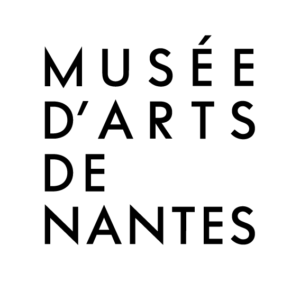Touching, feeling, listening, getting as close as possible to works of art. The mobile furniture designed by Tactile Studio for the Musée d’Arts de Nantes allow for a multisensory – almost sensual – experience of art. They offer a new dimension in discovering a work of art.
At the start of this project, the museum’s teams had formulated a request for mediation support for two thematic trails within the artistic collections: women and food in art. They had thought of a set-up comprising easy-to-move educational kits to present these visits in situ and store in a specially adapted mobiles.
Tactile Studio designed on the basis of the request, light and movable furniture to facilitate a multi-sensory approach to get as close as possible to the works of art. The custom-designed furniture produced by Hecho, enables a device complete with descriptions of the works of art.
Testing on-site
Designed for people with impaired vision and for people with special needs, but accessible to all, this set of tools allows the museum’s mediation officers to develop their visitor experience according to the target public and the works they want to present.
A tactile representation of the work, with boards giving significant details of the composition, with associated ambient sounds and a diffusion of scents or samples of material all help to create a mental picture and to complete the tactile sensations.
The collection of selected sounds is stored in the furniture and triggered by an NFC (near-field communication) chip (similar to an RFID – radio frequency ID).
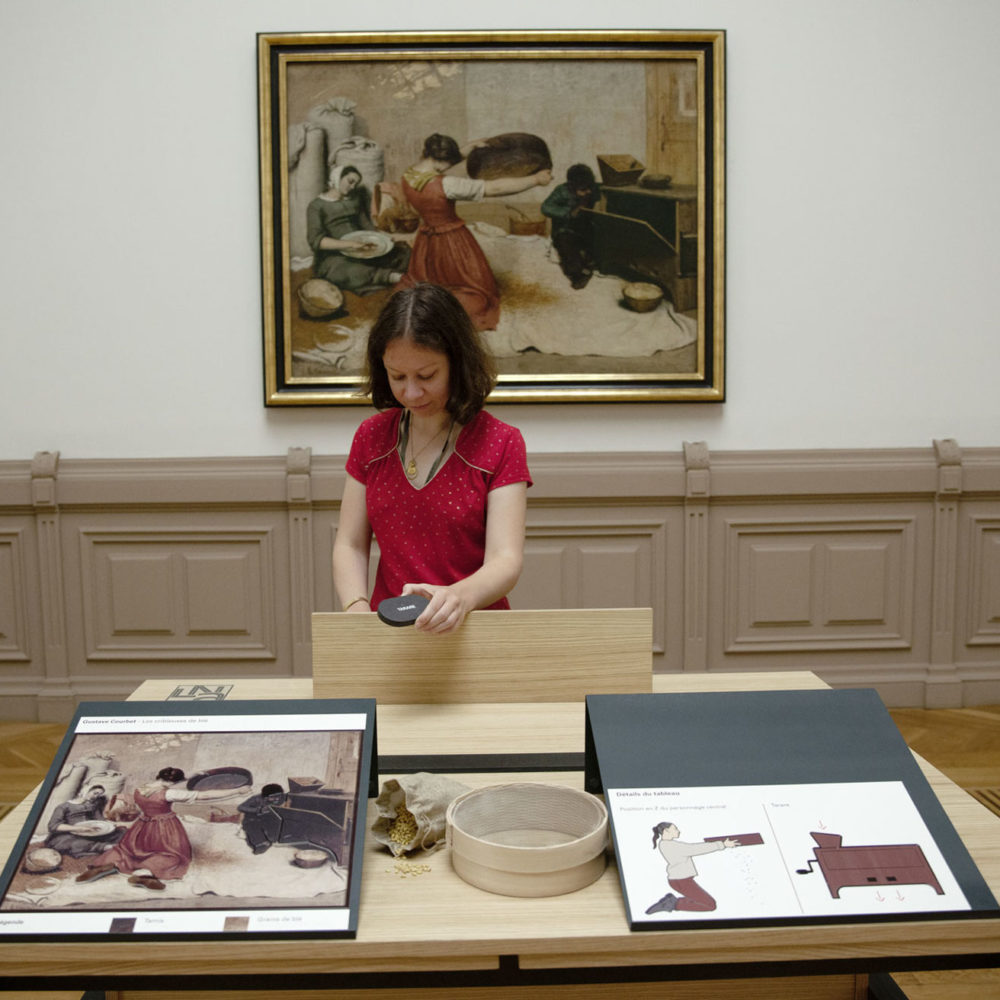
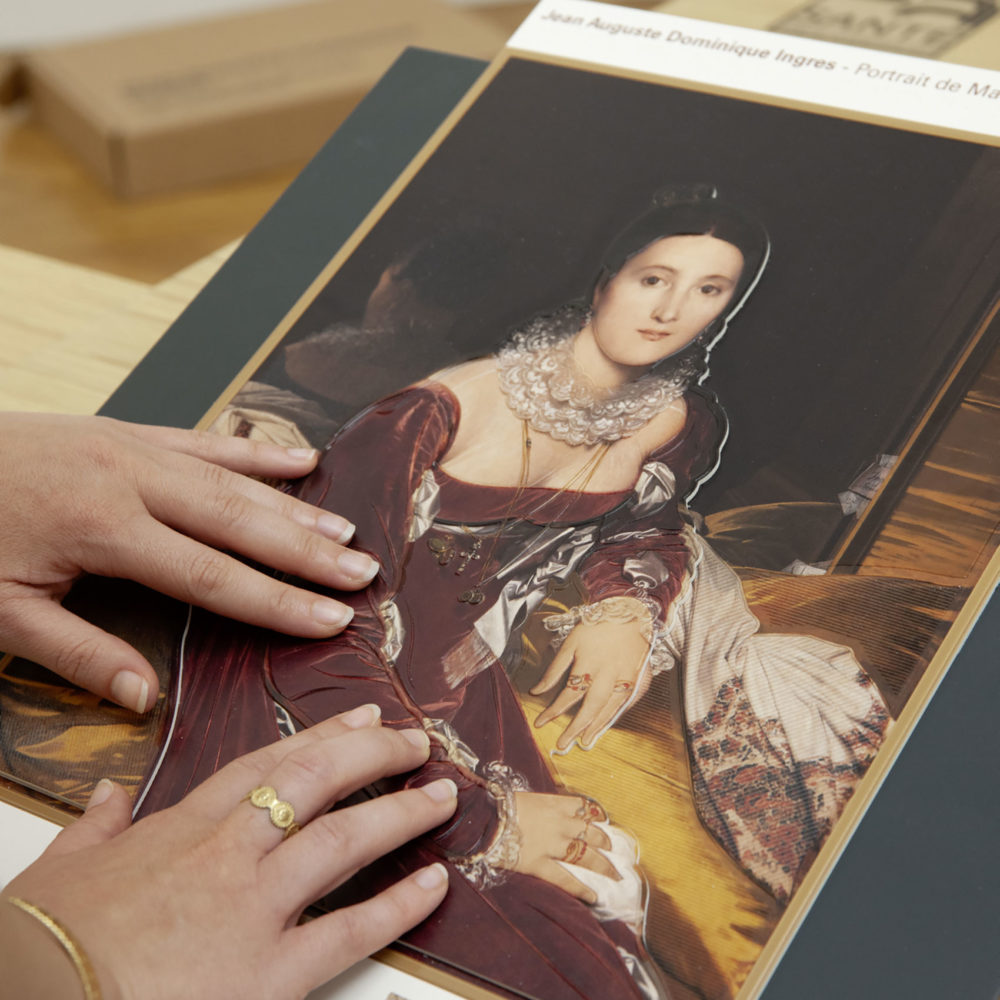
During the design process, the Tactile Studio team carried out some on-site trials with the mediation team of the Musée d’Arts de Nantes in order to evaluate and validate the scenarios imagined.
Julien Garnier, graphic designer, took part in this phase of the project: “The reflections of visitors with visual impairments who took part in the trial exceeded our expectations. The variety of sensory approaches allowed for more ways of reading the works. Jean-Emile Laboureur’s Le café du commerce, one of the works showcased in the “Tables and food” trail, presents a very special perspective. The participants in the trial understood this perfectly, thanks to the scenario we had imagined.”
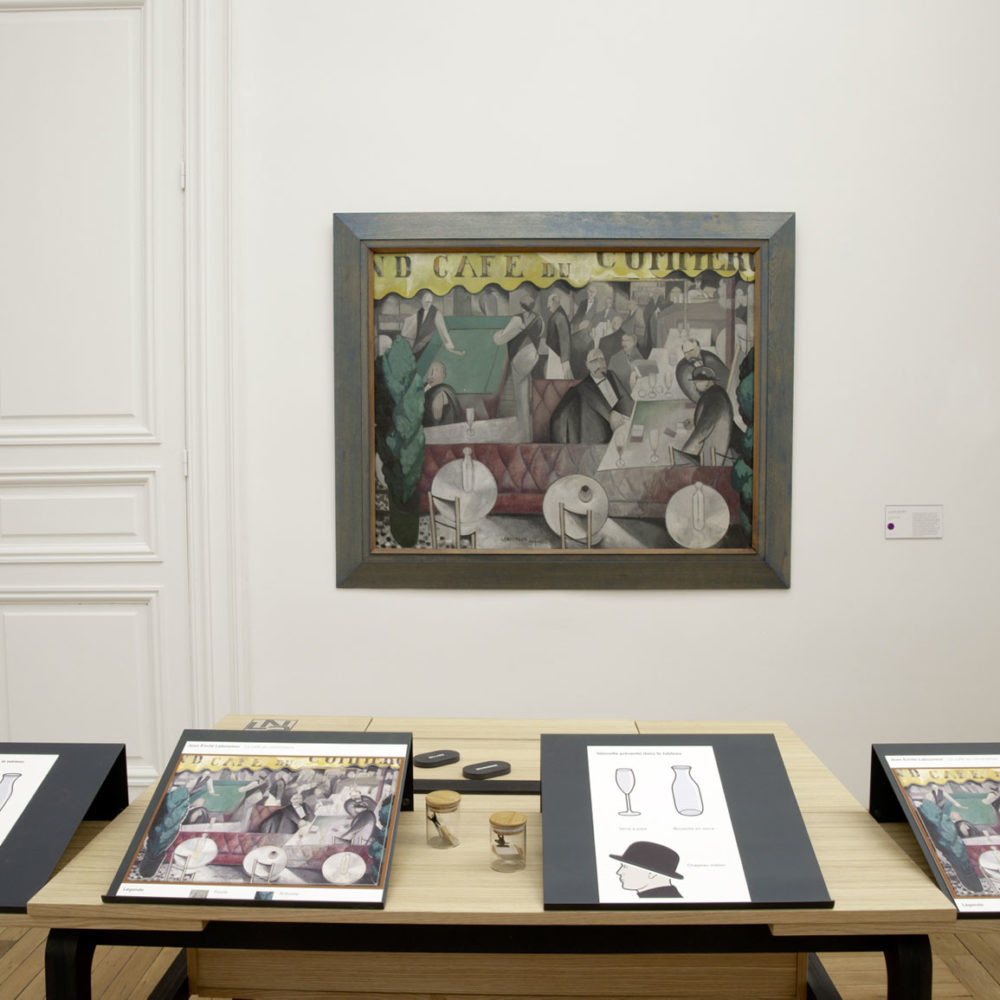
Tailor-made scenarios
The range of works selected, in terms of period, style and composition, required a tailor-made treatment for each device.
For Jean-Émile Laboureur’s Le café du commerce, the visitor is plunged into the ambient sound of a bistro and inhales the aroma of freshly ground coffee.
The tactile version of Portrait de Madame de Senonnes by Ingres, depicting a richly dressed woman, was complemented by samples of fabric, silk and velvet and the artefacts of her jewellery to evoke the richness of her attire.

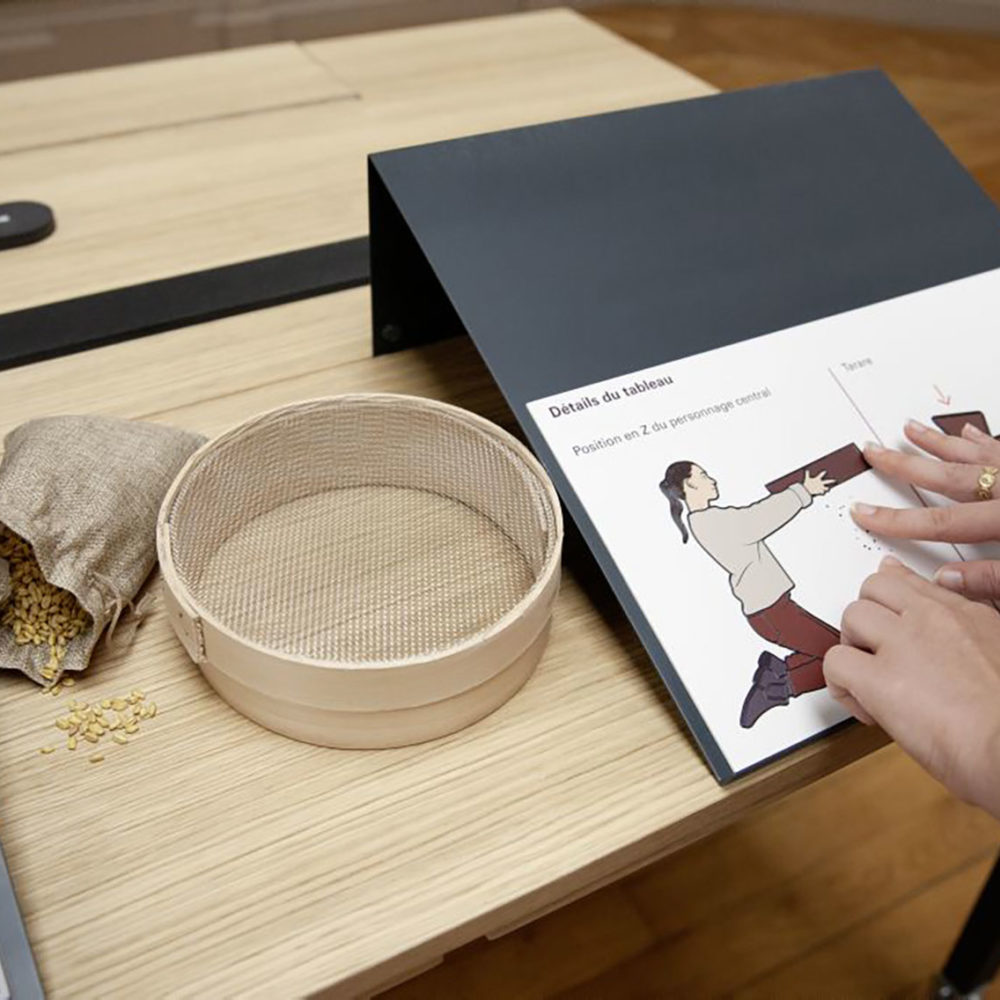
Martial Raysse’s La belle Mauve is discovered by the scent of lipstick and the brushing of feathers.
For Gustave Courbet’s Les cribleuses de blé, visitors are invited to plunge their hands into jute bags containing grains of wheat. Some very classical themes, like
La Cène by Mariotto di Nardo, have been modernised. We used a little artistic licence to change the food shown in the painting: the loaf is transformed to a hamburger and the wine to a fizzy drink. Or… the art of appropriation that gently touches the soul.
Client: Musée d’Arts de Nantes
Partners: Atelier WAM / Hecho
